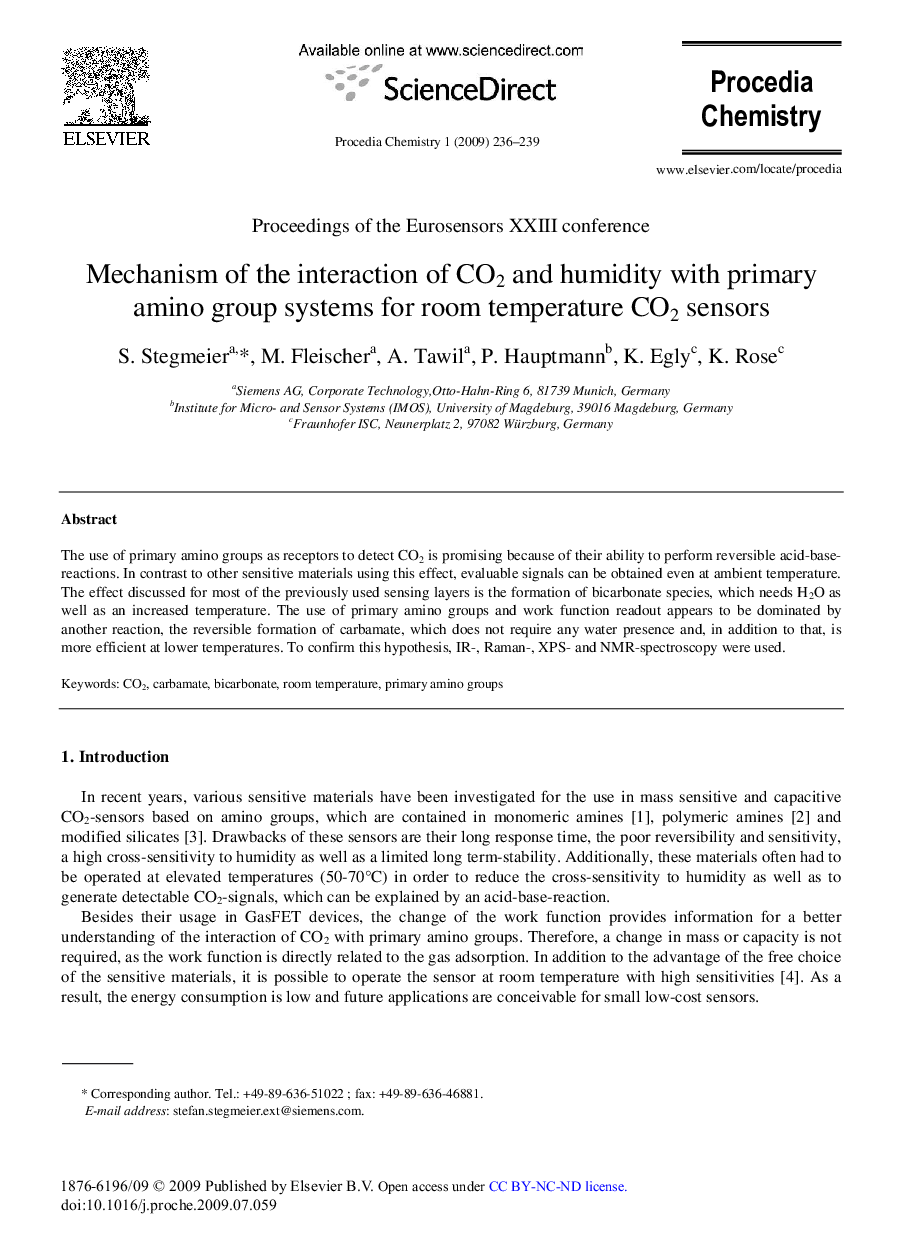| Article ID | Journal | Published Year | Pages | File Type |
|---|---|---|---|---|
| 239701 | Procedia Chemistry | 2009 | 4 Pages |
The use of primary amino groups as receptors to detect CO2 is promising because of their ability to perform reversible acid-base-reactions. In contrast to other sensitive materials using this effect, evaluable signals can be obtained even at ambient temperature. The effect discussed for most of the previously used sensing layers is the formation of bicarbonate species, which needs H2O as well as an increased temperature. The use of primary amino groups and work function readout appears to be dominated by another reaction, the reversible formation of carbamate, which does not require any water presence and, in addition to that, is more efficient at lower temperatures. To confirm this hypothesis, IR-, Raman-, XPS- and NMR-spectroscopy were used.
